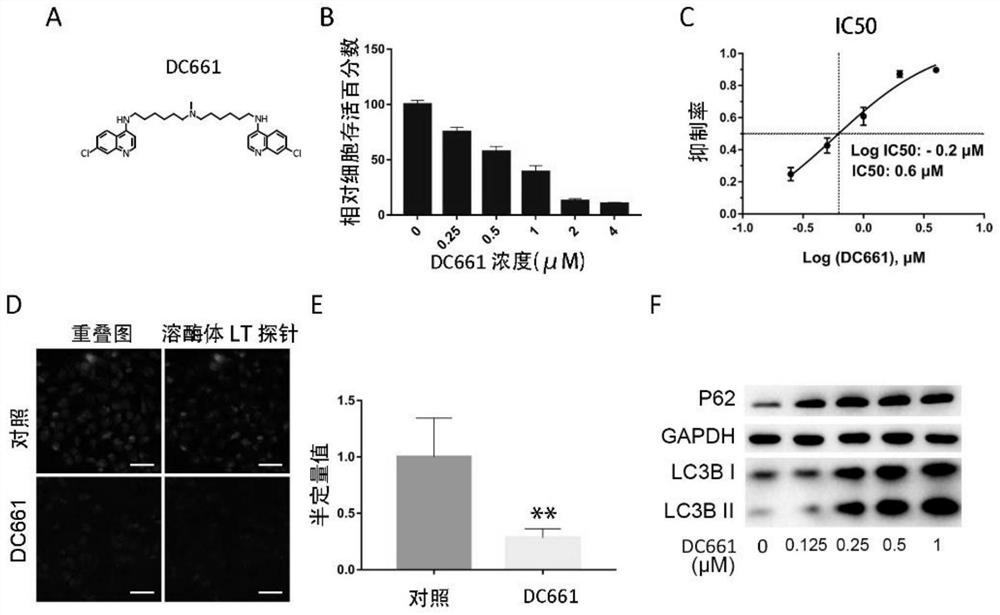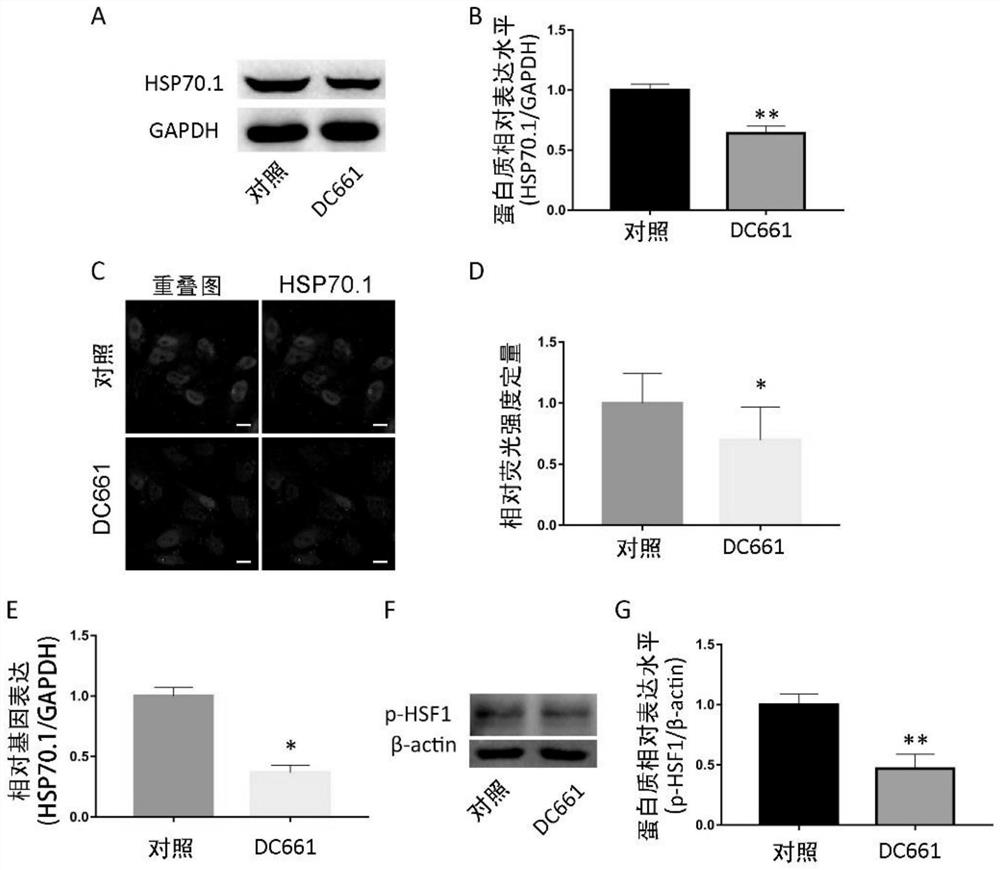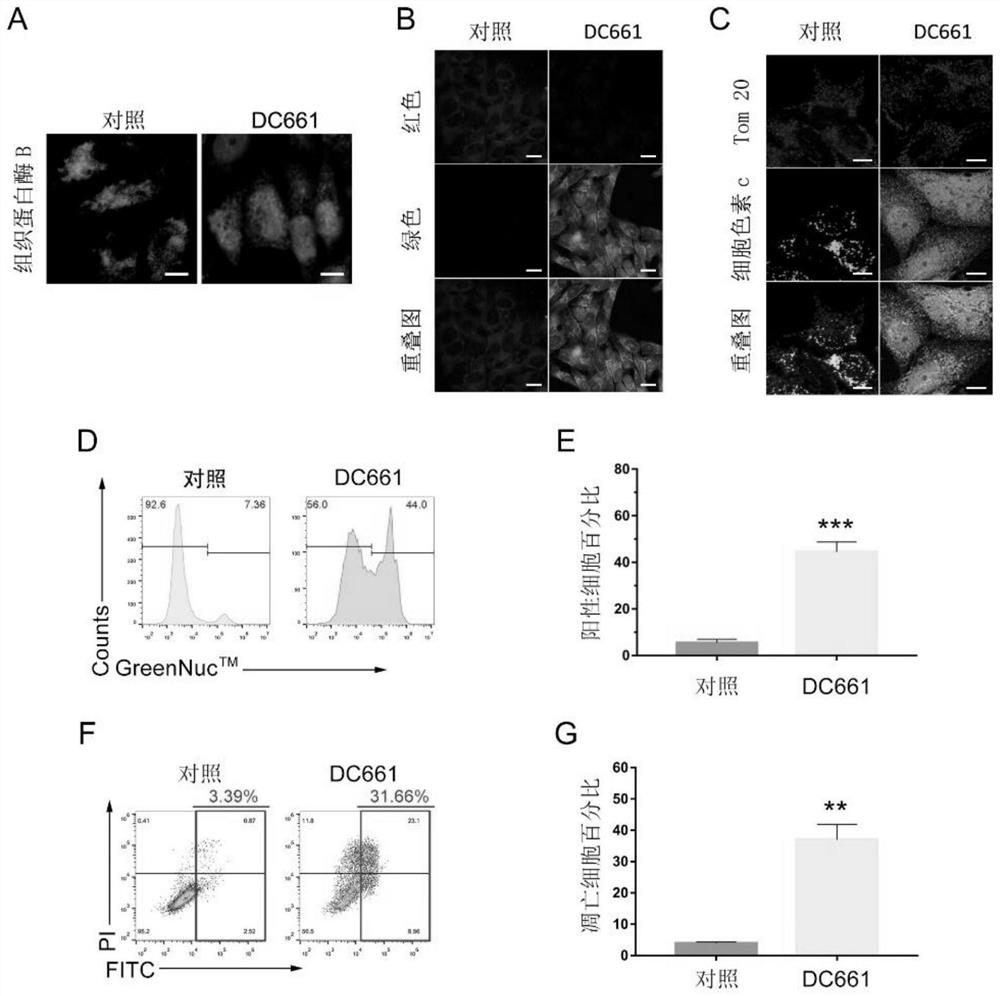Application of DC661 in treatment of hepatocellular carcinoma
A technology for hepatocellular carcinoma and its use, which is applied in the field of prevention and/or treatment of hepatocellular carcinoma, and can solve the problems of high risk of patients and impact on treatment effect, etc.
- Summary
- Abstract
- Description
- Claims
- Application Information
AI Technical Summary
Problems solved by technology
Method used
Image
Examples
Embodiment 1
[0028] Example 1. DC661 inhibits the activity of human hepatocellular carcinoma cell line Hep 3B cells
[0029] The human hepatocellular carcinoma cell line Hep 3B cells as in Example 1 above were used as an in vitro experimental model, and the human hepatic carcinoma cell line Hep 3B cells were divided into two groups, namely the control group (treated with PBS) and the DC661 group. Different concentrations of DC661 (DC661 purchased from TargetMol, catalog number: T5538) were used to treat the human hepatocellular carcinoma cell line Hep 3B for IC50 test, CCK8 assay, Western blot and lysosomal LT green fluorescent probe staining analysis.
[0030] cck8 cell viability detection, DC661 has a dose-dependent anti-tumor effect ( figure 1 B), showing that DC661 inhibits the activity of human hepatocellular carcinoma cells. IC50 results as figure 1 C shown. After DC661 (3μM, 6h) treatment, the staining of the lysosomal LT green fluorescent probe was weakened, and the fluorescent ...
Embodiment 2
[0031]Example 2, DC661 inhibits the expression of genes and proteins that maintain lysosomal membrane stability in human hepatocellular carcinoma cells
[0032] The human hepatocellular carcinoma cell line Hep 3B cells as in Example 1 above were used as an in vitro experimental model, and the human hepatic carcinoma cell line Hep 3B cells were divided into two groups, namely the control group (treated with PBS) and the DC661 group. The human hepatocellular carcinoma cell line Hep 3B cells were treated with 3 μM DC661, and the key gene HSP70.1 and its transcription factor HSF1, which maintain the stability of the lysosomal membrane, were detected at 6 hours.
[0033] The results of Western blot showed that compared with the control group, DC661 significantly down-regulated the expression of HSP70.1 protein (*p figure 2 A and 2B). Protein expression was verified in another way by treating HSP70.1 on Hep 3B cells with the above conditions for immunofluorescence staining. The res...
Embodiment 3
[0034] Example 3, DC661 induces apoptosis of human hepatocellular carcinoma cells
[0035] Human hepatocellular carcinoma cell line Hep 3B cells were treated with 3 μM DC661, and immunofluorescent staining was performed at 6 hours to detect the intracellular distribution of cathepsin B. Immunofluorescence results showed that, compared with the control group, DC661-treated cells induced the release of cathepsin B in the lysosome into the cytoplasm ( image 3 A). Hep 3B cells were treated under the above conditions, and the mitochondrial membrane potential was detected by JC-1 fluorescent probe staining. The results of JC-1 fluorescent probe staining showed that compared with the control group, DC661-treated cells showed a trend of decreased red fluorescence and enhanced green fluorescence, indicating that the mitochondrial membrane potential was depolarized ( image 3 B). Cytochrome c in Hep 3B cells was treated under the above conditions for immunofluorescence staining. The...
PUM
 Login to View More
Login to View More Abstract
Description
Claims
Application Information
 Login to View More
Login to View More - R&D
- Intellectual Property
- Life Sciences
- Materials
- Tech Scout
- Unparalleled Data Quality
- Higher Quality Content
- 60% Fewer Hallucinations
Browse by: Latest US Patents, China's latest patents, Technical Efficacy Thesaurus, Application Domain, Technology Topic, Popular Technical Reports.
© 2025 PatSnap. All rights reserved.Legal|Privacy policy|Modern Slavery Act Transparency Statement|Sitemap|About US| Contact US: help@patsnap.com



